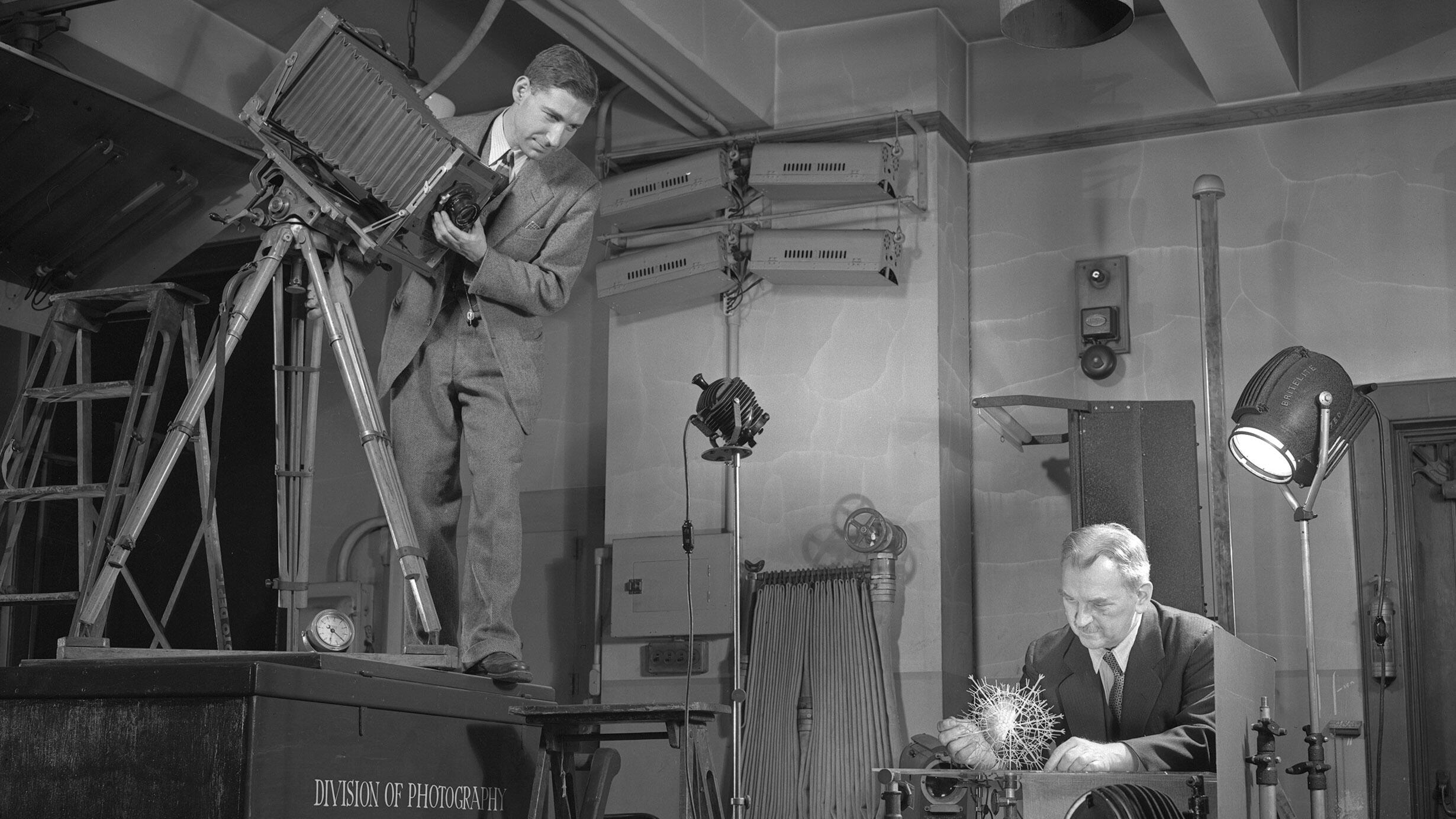 For 40 years, master glassblower Herman Mueller made close to 1,000 models of microbial organisms for the Museum special exhibitions and permanent displays.
For 40 years, master glassblower Herman Mueller made close to 1,000 models of microbial organisms for the Museum special exhibitions and permanent displays.©AMNH
Rotifers, tiny aquatic animals that were first observed in the 17th century by Anton van Leeuwenhoek, are invisible to the naked eye.
But stop by the Museum’s Hall of Biodiversity and you can spot them in the Spectrum of Life exhibit. Magnified to 1 million times their size, these microscopic organisms are made visible—and mesmerizingly beautiful—in blown-glass models created by Museum preparator Herman O. Mueller in the first half of 20th century.
Mueller is one in a long line of artists and exhibition preparators who have revealed imperceptible worlds to visitors of the American Museum of Natural History, a tradition that today extends to spectacular visualizations of invisible dark matter in the Space Show Dark Universe and immersive exhibits about remote ocean habitats in the special exhibition Unseen Oceans.
Mueller was born in Thüringia, Germany, into a family of glassblowers. His father, grandfather, and uncles made glass ornaments, while his mother, sisters, and brother decorated them. In 1893, the family opened a shop in New York, making mostly chemical equipment like flasks and beakers.
©AMNH
One day in 1903, the head of the Museum Preparation Department stopped by the shop and asked Mueller to make glass models of paramecium, a single-celled organism found in fresh water, and other tiny marine animals. According to an account in The New Yorker on March 11, 1939, Mueller’s “hydroids so pleased the Museum, it hired him on the spot.”
©AMNH
So began a long career that produced some 1,000 models of organisms, from radiolarians to the Portuguese man-of-war. Mueller worked closely with Museum scientists to study organisms under the microscope and consulted the illustrations of famed German zoologist Ernst Haeckel, championing glass as the perfect format for visualizing the intricacies of microbial life for the public.
©AMNH
“Most of the organisms possess texture and coloring so translucent and delicate that glass is the only medium capable of reproducing them faithfully and naturally,” he wrote in 1928 about his work illustrating of a single cubic half-inch of pond life, called the Rotifer Group, in an alcove of Darwin Hall, a permanent exhibition that opened at the Museum in 1904.
©AMNH
Mueller retired in the 1940s, and Darwin Hall closed in early 1950s, but the glass creations have remained on view. In April 1966, after he had been retired for more than 20 years, Mueller attended the opening of a new exhibition that included his models, which a reporter for The New York Times noted “turn the lowly protozoa and hydroid into shapes probably never dreamed of by the farthest-out of surrealist artists.”
©AMNH
Today, visitors to the Hall of Biodiversity can still glimpse Mueller’s models of sea cucumbers, protoctists, green algae, and, of course, rotifers, in their timeless, glassy glory.